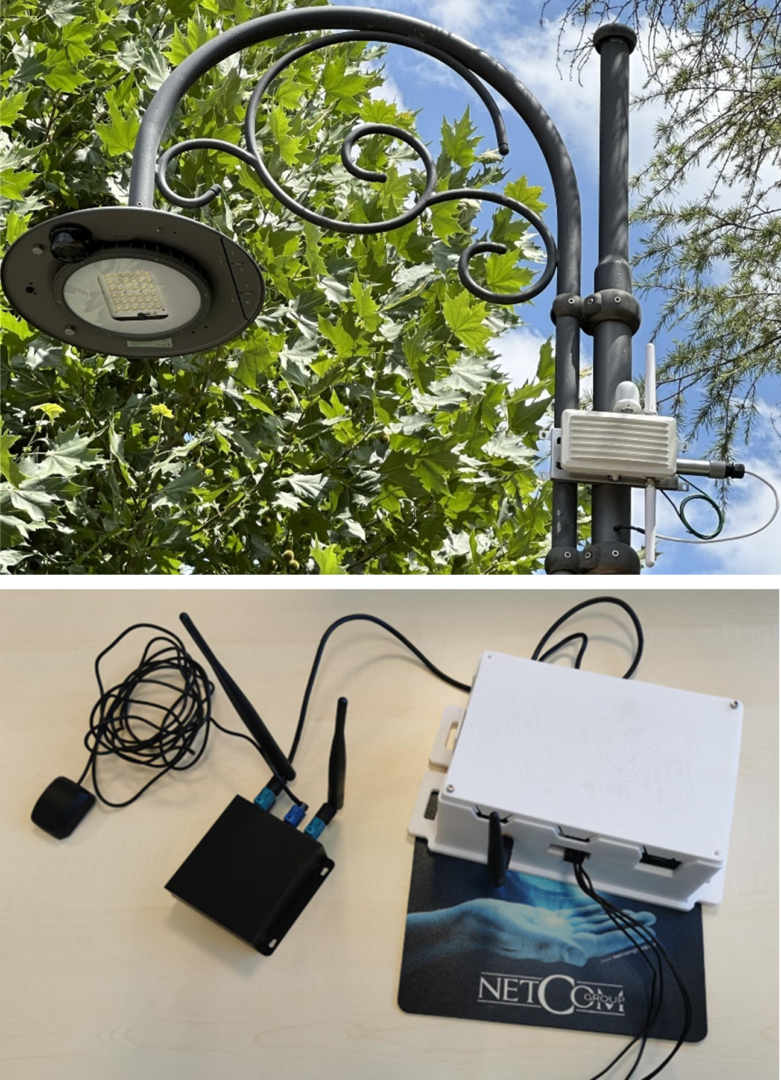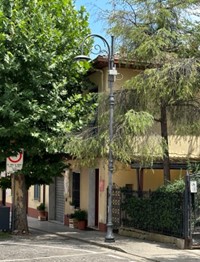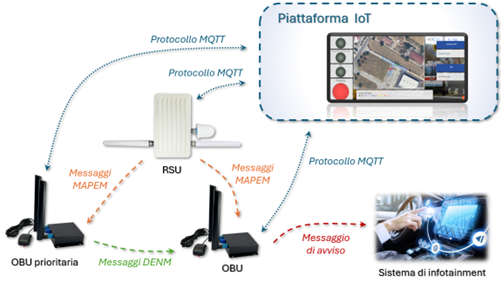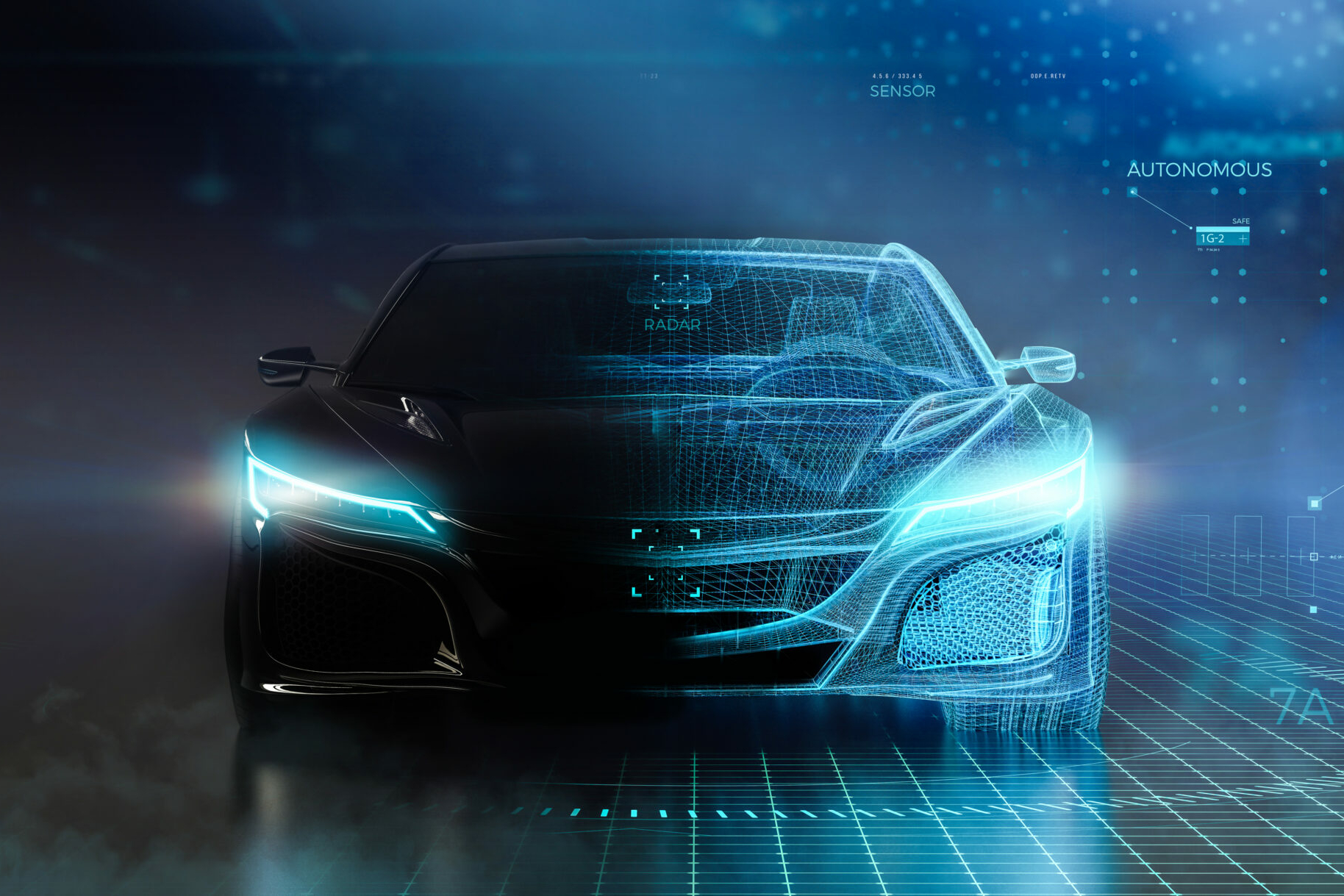According to a 2022 ISTAT report, about 15% of road accidents involved emergency vehicles, often in high-speed collisions. In response to this issue, the C-Mobility (Borgo 4.0) project, promoted by ANFIA and the Campania region, focused on the development of V2X (Vehicle-to-Everything) communication applications. These technologies enable real-time information exchange between vehicles, infrastructure, and other road users, representing a key element for the future of smart mobility.
V2X communications are divided into three main categories:
- Vehicle-to-Infrastructure (V2I) where the road infrastructure provides vehicles with information on traffic, weather conditions, speed limits, and accidents.
- Vehicle-to-Vehicle (V2V), which enables real-time information exchange between vehicles.
- Vehicle-to-Pedestrian (V2P), where vehicles detect pedestrians through sensors and communicate warnings of imminent collisions.
A key protocol for these communications is Dedicated Short Range Communication (DSRC), based on the IEEE 802.11p standard and operating in the 5.9 GHz frequency band, which is exclusively dedicated to V2X applications, ensuring secure and low-latency communication. However, V2X communication requires dedicated hardware components for smart mobility, which are the On-Board Units (OBU) and the Roadside Units (RSU), as shown in Figure 1. The OBU, installed on the vehicle, transmits and receives DSRC messages and provides alerts to the driver. The RSU, installed on dedicated smart poles (e.g., for street lighting), manages traffic and disseminates safety alerts.

Figure 1 – Roadside Unit mounted on a public lighting element and On-Board Unit.
The European Telecommunications Standards Institute (ETSI) defines various types of messages for V2X communications:
- Cooperative Awareness Message (CAM): These report information collected by the OBU in the vehicle, such as speed, position, and orientation.
- Decentralised Environmental Notification Message (DENM): These signal the presence of an event until its termination.
- Map Extend Message (MAPEM): These contain the topological description of a road segment.
- Signal Phase and Timing Extended Message (SPATEM): These indicate the status of traffic lights at an intersection.
- Signal Request Extended Message (SREM): These are used to request a change in the state of a traffic light. The Signal Status Extended Message (SSEM) is the response to the previously sent request, indicating whether it was accepted or rejected.
With the C-Mobility project, Netcom has developed several V2I communication scenarios between two connected vehicles, each equipped with an OBU, and the smart road infrastructure equipped with an RSU. A first application prototype was developed in Orta di Atella (CE) near an intersection consisting of five lanes, each described by three nodes, as shown in Figure 2.

Figure 2 – Satellite image of the map transmitted by the MAPEM messages. The numerical values indicate the corresponding nodes.
Similarly, for the final experimental phase of the project, specific use cases were developed in the municipality of Lioni (Avellino), which represented the pilot case for Smart Mobility applications related to the Borgo 4.0 Platform. In this regard, a use case was created to manage a pedestrian crossing on an uphill road segment near a curve (a case of potential poor visibility), close to a school. Another use case was developed for the intelligent management of priority for high-priority vehicles (e.g., patrols, ambulances) at an intersection involving Piazza San Carlo. Figure 3 shows the installation of RSUs on Smart Poles created by the company Alfano, a project partner.


Figure 3: RSU installations in Lioni on a smart pole produced by Alfano.
In general, the RSU periodically transmits MAPEM messages, allowing vehicles within the DSRC range (approximately 200 meters) to localize themselves at the intersection and exchange messages with each other. In fact, the OBUs are able to determine in which lane the vehicles are located by comparing their position with the nodes on the map contained in the MAPEM message.
For example, considering the use case for managing priority for high-priority vehicles, the system allows emergency vehicles to send a notification to vehicles approaching the intersection. These vehicles receive the alert through an infotainment system until the emergency vehicle has completely crossed the intersection. The sending and receiving of notifications occur through the use of DENM messages. Additionally, the data collected by the devices is sent to an IoT platform, enabling real-time visualization of their position on an interactive map. Figure 4 illustrates the diagram of the devices and the messages exchanged by the developed IoT application.

Figure 4 – V2I communication for the priority passage of emergency vehicles.
Created by
Ing. Enrico Landolfi, Head of the Innovation Area, NetCom Group


